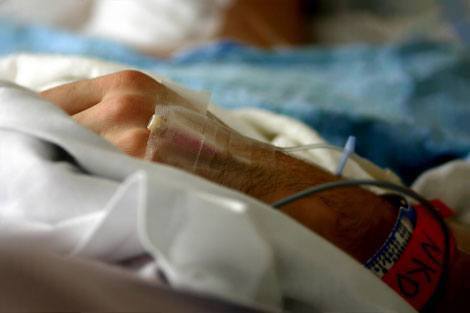For immediate release: Wednesday, September 18, 2013
Boston, MA — More than 43 million people are injured worldwide each year due to unsafe medical care, according to a new study from Harvard School of Public Health (HSPH). These injuries result in the loss of nearly 23 million years of “healthy” life. The findings represent a major new effort to calculate the global burden of unsafe medical care across a range of adverse health events.
The study appears online September 18, 2013 in BMJ Quality & Safety.
“This is the first attempt to quantify the human suffering that results from unsafe care,” said lead author [[Ashish Jha]], professor of health policy and management at HSPH. “We find that millions of people around the world are hurt, disabled, and sometimes even die as a result of medical errors.”
The HSPH researchers, along with colleagues at the Patient Safety Programme of the World Health Organization (WHO) in Geneva, Switzerland and the Health Care Quality and Outcomes Program at RTI International in Durham, North Carolina, used data from more than 4,000 articles that have been published over the previous few decades that focused on adverse events in hospitals, as well as from epidemiologic studies commissioned by WHO aimed at estimating how much these events harmed patients. They examined seven different adverse outcomes that can occur while patients are hospitalized: injuries due to medications; catheter-related urinary tract infections; catheter-related blood stream infections; hospital-acquired pneumonia; blood clots in veins; falls; and bedsores.
The authors used the existing data to model the impact of these adverse events on hospitalized patients across the globe. The researchers used a metric called “disability-adjusted life years” (DALYs), which measures years of healthy life lost due to ill health, disability, or early death.
The researchers found that, for most of the adverse events examined in the study, premature death was the biggest driver of DALYs lost—78.6% of all adverse events in high-income countries and 80.7% in low- and middle-income countries. However, disability was more common than death itself, the study found.
Other findings included:
• For every 100 hospitalizations, there were approximately 14.2 adverse events in high-income countries and 12.7 in low- and middle-income countries.
• The number of DALYs lost was more than twice as high in low- and middle-income countries (15.5 million) as it was in high-income countries (7.2 million).
• The most common adverse events in high-income countries were adverse drug events (incidence rate 5%).
• The most common adverse events in low- and middle-income countries were blood clots in veins (incidence rate 3%).
The authors noted that, taken together, the seven types of adverse impacts examined in the study rank as the 20th leading cause of morbidity and mortality for the world’s population. However, they added, there are many other types of adverse events not examined in this study—such as the use of infected needles, tainted blood products, or counterfeit drugs—that would likely raise the estimates of DALYs lost substantially. The researchers also found that a large majority—about two-thirds—of injuries and harm occur in low- and middle-income countries.
The findings suggest that policymakers and nations should place major emphasis on not just improving access to care but also on ensuring the safety and effectiveness of health care systems worldwide, according to the authors. “When patients are sick, we find that they are too often injured from the care that is meant to heal them. This should not be seen as a price of providing health care—we can and should do so much better,” said Jha.
“These findings are an important sign that we need to invest in improving the quality and safety of healthcare systems around the globe,” said the study’s senior author, David Bates, senior vice president for quality and safety at Brigham and Women’s Hospital.
Support for the study came from the WHO Patient Safety Programme.
“The global burden of unsafe medical care: an observational study,” Ashish K. Jha, Itzia Larizgoitia, Carmen Audera-Lopez, Nittita Prasopa-Plaizier, Hugh Water, and David W. Bates, BMJ Quality & Safety, online September 18, 2013, 22:809-815
photo: iStockphoto.com/spxChrome
For more information:
Todd Datz
617.432.8413
tdatz@hsph.harvard.edu
Visit the HSPH website for the latest news, press releases and multimedia offerings.
###
Harvard School of Public Health brings together dedicated experts from many disciplines to educate new generations of global health leaders and produce powerful ideas that improve the lives and health of people everywhere. As a community of leading scientists, educators, and students, we work together to take innovative ideas from the laboratory and the classroom to people’s lives—not only making scientific breakthroughs, but also working to change individual behaviors, public policies, and health care practices. Each year, more than 400 faculty members at HSPH teach 1,000-plus full-time students from around the world and train thousands more through online and executive education courses. Founded in 1913 as the Harvard-MIT School of Health Officers, the School is recognized as the oldest professional training program in public health. For more information, visit www.hsph.harvard.edu.
HSPH on Twitter: http://twitter.com/HarvardHSPH
HSPH on Facebook: http://www.facebook.com/harvardpublichealth
HSPH on You Tube: https://www.youtube.com/user/HarvardPublicHealth
HSPH home page: https://www.hsph.harvard.edu
